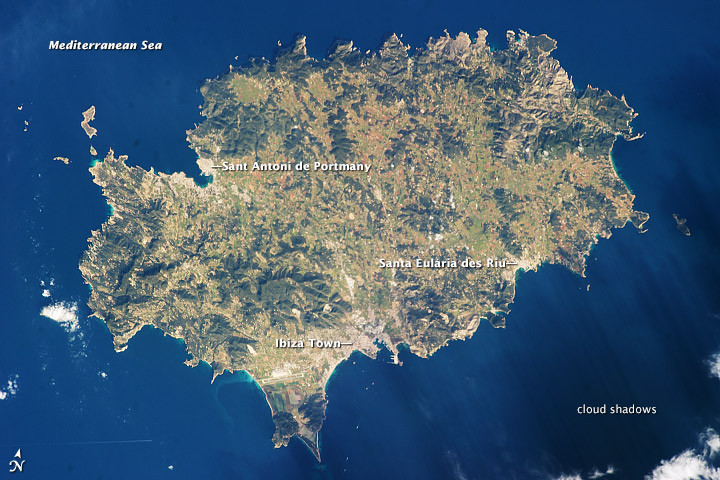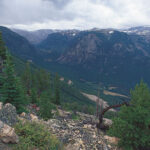Ibiza, globally renowned for its vibrant nightlife and picturesque landscapes, is a captivating island that beckons travelers from every corner of the world. But where is Ibiza located exactly? This Mediterranean gem is nestled off the southeastern coast of Spain, forming part of the stunning Balearic archipelago. Known locally as Eivissa in Catalan, Ibiza, along with its tranquil sister island Formentera, constitutes the Pine Islands, the westernmost segment of this Spanish archipelago.
The island’s urban centers, including Ibiza Town (Vila), Sant Antoni de Portmany, and Santa Eulària des Riu, are easily identifiable in aerial views as light-colored regions hugging the coastline. These cities, depicted in the featured image captured from the International Space Station, are hubs of activity, particularly famous for their bustling tourism industry. Ibiza Town and Sant Antoni de Portmany especially pulsate with world-famous nightlife, drawing visitors seeking entertainment and Mediterranean vibes.
 Ibiza Island Location: A stunning aerial view from the International Space Station, showcasing Ibiza's geographical location in the Balearic Islands, Spain, in the Mediterranean Sea. Explore Ibiza's coastal cities, agricultural lands, and hilly terrain from a unique space perspective.
Ibiza Island Location: A stunning aerial view from the International Space Station, showcasing Ibiza's geographical location in the Balearic Islands, Spain, in the Mediterranean Sea. Explore Ibiza's coastal cities, agricultural lands, and hilly terrain from a unique space perspective.
Beyond its lively coasts, Ibiza’s interior reveals a tapestry of green and light brown agricultural fields. This lowland area is actively cultivated with crops like wheat, olives, and grapes, reflecting the island’s fertile lands. Interestingly, some fields lie fallow, allowing for the resurgence of indigenous flora, such as Aleppo pine and Phoenician juniper trees, contributing to the island’s biodiversity and natural charm. Contrasting the gentle interior, Ibiza’s northern and southwestern coastlines are characterized by a more rugged, hilly terrain, painted in grey-brown hues. Here, Sa Talaia, the island’s highest point at 475 meters above sea level, stands proudly in the southwest, offering panoramic views of the Mediterranean expanse.
Ibiza’s natural and cultural significance is further underscored by its designation as a UNESCO World Heritage site in parts, encompassing both terrestrial and near-shore marine areas. These protected zones offer havens for ecotourism and adventure activities like rock climbing, attracting nature enthusiasts and outdoor adventurers. The island is also a haven for diverse fauna, particularly birds and lizards, while its wetlands shared with Formentera are recognized by the Ramsar Convention as crucial habitats for nesting and migrating waterbirds, highlighting Ibiza’s ecological importance on a global scale.
Visible from above are also signs of human activity. Ships leaving wakes near Ibiza Town and the contrail of an airplane off the southwestern coast illustrate the island’s connectivity and activity. The dark expanse of the Mediterranean Sea to the southeast, shadowed by subtle cloud formations, completes the picture, grounding Ibiza firmly within its stunning geographical context. Ibiza’s location, therefore, is not just a point on a map, but a confluence of geographical, cultural, and ecological factors that make it a unique and cherished destination in the Mediterranean.


